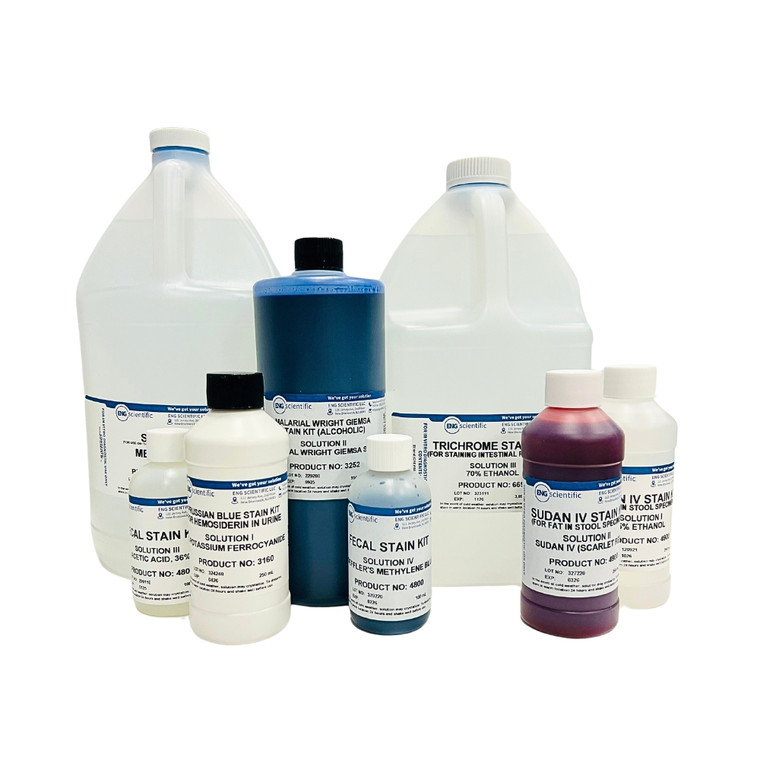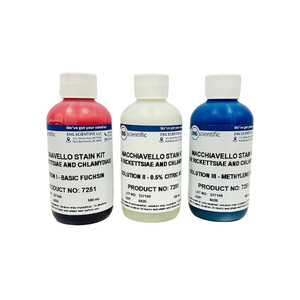- Solution I - Basic Fuchsin
- Solution II - Citric Acid (0.5%)
- Solution III - Methylene Blue
- Solution IIIA - Brilliant Green
Rickettsiae and chlamydiae are considered to be small bacteria since they are prokaryotic cells possessing DNA and RNA and they reproduce by the process of binary fission. They differ from all other bacteria by being obligate intracellular parasites. Since they are gram negative, gram stain does not differentiate them from the cellular material with which they are usually associated. The Macchiavello stain is considered to be one of the best differential stains available. The mechanism of this staining procedure is based on the affinity of cationic (basic) dyes for rickettsial and chlamydial organisms. This is emphasized in the decolorization step where cellular material is decolorized faster than the microorganisms.
CONTENTS: Basic Fuchsin, Citric Acid, Methylene Blue, Malachite Green
These solutions are made from certified dyes (when applicable).
FOR IN VITRO DIAGNOSTIC USE ONLY.
RECOMMENDED PROCEDURE: Prepare a smear from tissue or yolk-sac material on a clean glass slide and allow to air dry. Lightly heat fix slide. Smears should be processed soon after preparation and not allowed to remain at room temperature unstained. Cover smear with Sol. I for 5 minutes. Drain off excess dye. Wash slide in water and then rinse briefly with Sol. II. Rinse smear in water again. Counterstain with Sol. III or Sol. IIIA for 10 seconds. Rinse again, blot dry and read microscopically.
NOTE: Exposure to citric acid for more than a few seconds will decolorize the organisms staining them blue instead of red.
RESULTS: In a properly prepared slide, rickettsiae and chlamydiae stain red, cellular material stains blue or green.
Safety Data Sheet - Macchiavello Stain Kit (Solution I)
- UPC:
- 12352142
- Availability:
- 3-5 Days
- Type:
- Macchiavello Stain
- Includes:
- Basic Fuchsin, Citric Acid, Methylene Blue, Malachite Green
- Format:
- Kit
- Hazmat:
- No
- WeightUOM:
- LB






